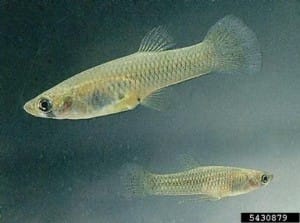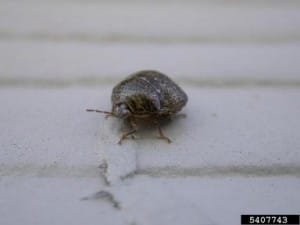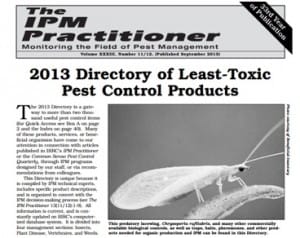
Some Facts About Florida’s Genetically Modified Mosquitoes from an article in Entomology Today by Richard Levine
Empowering Georgia through UGA Extension

Some Facts About Florida’s Genetically Modified Mosquitoes from an article in Entomology Today by Richard Levine
Edited from the PROGRAM SPOTLIGHT section of the November 2013 issue of Dideebycha, the Georgia Mosquito Control Association newsletter.

The mosquitofish program is a new venture for Richmond County Mosquito Control. Since there are always some pools that have to be in control maintenance due to an inability to determine who owns the pool, or other reasons, a means of reducing the cost of maintaining these pools was sought. Tiny fish could be the answer to some of the county’s biggest mosquito problems.
Mosquitofish fill Phinizy Swamp and now they also fill some abandoned swimming pools. It’s a new project with Richmond County Mosquito Control and the Southeastern Natural Sciences Academy and it could save residents a few bug bites.
Dr. Oscar Flite is the Vice President for Research at the Southeastern Natural Sciences Academy at Phinizy Swamp. They’ve teamed up with Richmond County mosquito control for an experiment with mosquito fish placing them in abandoned pools to stop mosquito’s from breeding there.
Earlier in the summer they added about 30 mosquito fish to 4 pools in the county. In two weeks they went back to check and see how the programs working. The fish had survived and were reproducing, and preliminary surveillance data show a decrease in numbers of mosquitoes being caught in traps set in the vicinity of the pools.
The mosquito fish will save both time and money. “It’s going to save us a lot of money because treating a pool three times a year costs us about 150 bucks,” explained Koehle.
“The guys spent about 5 minutes going out and catching more than a 150 mosquito fish, so in terms of economics I think it works out pretty well,” added Dr. Flite. An easy fix and easy to get rid of when someone wants to swim.
“When a new homeowner moves in, they dump the water out the fish go with it no big deal,” said Koehle
“Nobody loses, everybody wins in this.”
Well, everyone except the mosquitoes.
See full article from the SR IPM site here
Originally published in Southeast Farm Press
By Jim Langcuster, Alabama Cooperative Extension System

Within only a few days after discovering a native parasitic fly that may reduce kudzu bug numbers significantly over time, Alabama Cooperative Extension System Specialist and Auburn University Researcher Xing Ping Hu has discovered a local egg-parasitic wasp.
This finding — the first discovery of an indigent wasp that parasitizes eggs of the exotic kudzu bug — could prove to be a game changer in the fight against this invasive species, Hu says.
Along with the earlier finding of a fly that preys on kudzu bug adults, Hu says the discovery of this parasitic egg wasp doubles the frontline of defense using natural enemies to fight this exotic pest.
“This local parasitoid wasp has demonstrated a high capacity to reduce significantly the populations of kudzu bugs in soybean fields,” she says.
The discovery was made by Hu’s research assistant, Auburn University graduate student Julian Golec, during a routine investigation of kudzu bug damage in a soybean field.
Hu says kudzu bugs are no different than any other insect species introduced into a new area. Figuratively speaking, entering an area with no known local predators is like drawing a lucky lotto number: the species thrives and its numbers mushroom as it develops into a full-blown invasive species, often wreaking havoc within its new environment.
“That’s why they become invasive in the first place,” Hu says. “They have no natural enemies to balance the ecosystem.”
“It’s as if they’re saying, ‘No one can mess with me so I can do what I want.’”
On the other hand, an incoming species draws an unlucky lotto number if it enters an environment teeming with natural enemies. In such cases, the species’ numbers may spike for a few years until local predators respond to the new species.
In the case of some invasive species, such as the red imported fire ant, the U.S. Department of Agriculture has stepped in to identify predators from the invasive species’ native habitat that could be introduced to reduce their numbers.
Article taken from Southern Region IPM News
(Editor’s note – this guide lists low toxicity alternatives for pest control. It does not mention the effectiveness of each option. This can be a starting point for finding low toxicity options for pest control but more research will be needed to determine the efficacy of each option. WC)
 The IPM Practitioner’s 2013 Directory of Least-Toxic Pest Control Products is now available online. This Directory lists more than 2,000 products such as baits, traps, pheromones, microbials, biocontrol agents, and other materials needed for IPM.
The IPM Practitioner’s 2013 Directory of Least-Toxic Pest Control Products is now available online. This Directory lists more than 2,000 products such as baits, traps, pheromones, microbials, biocontrol agents, and other materials needed for IPM.
Contact information is provided for more than 600 national and international suppliers. The Directory can be found at the following link:
http://www.birc.org/Directory.htm
And take a look at the October 11 post in Insects in the City for a little more information about the directory and its publisher.
A newly-hired University of Georgia entomologist hopes to develop genetic resources to understand fire ant success in the southeastern United States. Ultimately, this research could lead to new methods to reduce the number of fire ants inflicting pain on humans and taking over lawns and pastures across Georgia.
“I’m searching for methods to knock down specific genes in the fire ant. The ability to perturb gene function can help us better understand the basis of traits related to fire ant social structure and population density,” said Brendan Hunt, an entomologist in the UGA College of Agricultural and Environmental Sciences and the newest faculty member of the Griffin campus.
Knowing more about fire ant genetics could lead to new control applications, he said.
Hunt earned a doctorate at Georgia Tech where he studied fire ant genetics and molecular evolution of social insects. He was also involved with the sequencing of the fire ant genome.
He is also interested in how environmental factors affect animal development. Hunt says a “model example” of the environment’s influence on development can be found in honeybees and fire ants.
“A female honeybee or fire ant egg can develop either into a queen or a worker and based on nutritional and feeding differences during their development,” he said. “A queen actively produces and lays eggs for a long time and lives for a long time while a worker is basically sterile.”
To build his research program at UGA, Hunt is collecting fire ants, an easy task as he’s found plenty living outside his office. “They are everywhere on this campus, which is great for me. One of the reasons fire ants are so successful is that they love mowed lawns, meadows and farmland,” Hunt said. In addition to studying fire ants, Hunt teaches undergraduate classes on the UGA Griffin campus.
For information on how to control fire ants in Georgia, see the UGA CAES publication “Managing Imported Fire Ants in Urban Areas” at www.caes.uga.edu/publications.
For some 50 years, scientists have tried — but failed — to find a way to use microbes as a means of biological control for destructive subterranean termites.
University of Florida researchers have now discovered why termites have proven to be so disease resistant. Termites use their own feces as nest-building material. The fecal nest promotes the growth of beneficial bacteria, which in turn suppress pathogens — or in plainer words: termite poop works as a natural antibiotic.
Besides improving termite control, the findings could help pave the way for new human antibiotics.
The study, published Wednesday in Proceedings of the Royal Society B, began about nine years ago, when postdoctoral associate Thomas Chouvenc, at the time a student, approached his faculty adviser, Nan-Yao Su, with his wish to study termite-pathogens interactions.
Su said he knew from the reams of scientific literature that biological control attempts in termites hadn’t been successful.
“Instead of saying ‘let’s use fungi to control termites,’ I said, ‘Maybe we could turn the tables around and ask ‘Why has it never worked?’” Su recalled.
Su, the inventor of well-known termite baiting system Sentricon, and Chouvenc are part of UF’s Institute of Food and Agricultural Sciences. Both are based at the UF/IFAS Fort Lauderdale Research and Education Center.
Termites are a $40 billion problem worldwide, and the Formosan subterranean termite accounts for a large portion of the problem.
The research team began to identify and isolate more than 500 strains of bacteria from five termite colonies collected from outdoor sites around Broward County. About 70 percent of the bacteria were shown to be active against a range of bacteria, yeast and fungi.
Researchers then honed in on a specific strain of bacteria called Streptomyces found in the nest material of all five termite colonies.
When they introduced a disease-causing fungus into sterile nest-like environments, they found that the fungus survived and killed the termites. When the Streptomyces bacterium was added to the nest, it protected the termites. When they tested a different bacteria strain against the fungus, it had little effect, leading them to conclude that the Streptomyces bacteria found in the nests may aid the termites by producing beneficial antimicrobial compounds, while feeding on the termite fecal nest.
Chouvenc said it was a time-consuming process but well worth the effort.
“We had to put all of the pieces of the puzzle together and show it was not just an artificial environment that produced this, that it does this in the individual termite nest, as well,” he said.
It is possible the team’s findings may help lead to new microbes that can be used to create new antibiotics for human use, Chouvenc said. Beyond that, he said, they want to tackle questions about how termites evolved to maintain their nests’ health, and whether it’s a stable system or one that’s constantly in flux.
If the termites are able to continually recruit the microbial strains they need to stay disease free, Su said, “then we have to find out how the termites do that.”
The research was funded by royalties Su receives, as well as seed money from UF/IFAS research. The other authors were Caroline Efstathion, a graduate student and employee in Su’s laboratory; and Monica Elliott, a UF/IFAS plant pathology professor also based at the Fort Lauderdale REC.